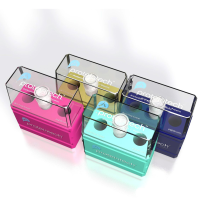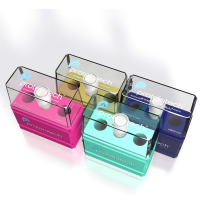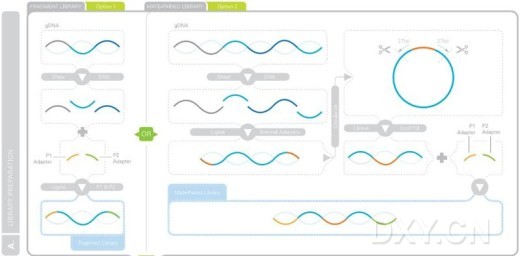ABI Solid Sequencing
互联网
ABI SOLiD sequencing is a form of DNA sequencing. DNA sequencing encompasses biochemical methods for determining the order of the nucleotide bases, adenine, guanine, cytosine, 5-methyl cytosine, and thymine, in a DNA oligonucleotide which is described by McKernan, Blanchard, Kotler and Costa. [1] and Valouev et al [2] and Cloonan et al [3]
The advent of DNA sequencing has significantly accelerated biological research and discovery. The rapid speed of sequencing attainable with modern DNA sequencing technology has been instrumental in the large-scale sequencing of the human genome, in the Human Genome Project and now the Human Epigenome Project. Related projects, often by scientific collaboration across continents, have generated the complete DNA sequences of many animal, plant, and microbial genomes. Now that many of these mammalian genomes have been sequenced scientists are attempting to provide an epigenetic map of DNA methylation for each tissue type within the body. They started by mapping chromosomes 6, 20 and 22 for a variety of tissues varying from sperm to heart muscle.
The SOLiD method provided by ABI is one of many new sequencing technologies that has emerged recently. For scientists, it is important to compare the various methods and biases relevant for each type of sequencing. Other methods exist to sequence bisulfite converted DNA such as pyrosequencing and direct bisulfite sequencing.
When sequencing bisulfite converted DNA to study DNA methylation the techniques need to be even more sensitive due to the reduced form of the DNA. When DNA is converted using bisulfite, the non-methylated Cs are converted to Ts while the methylated Cs remain the same. Therefore, using standard sequencing equipment the detection of a C indicates it was methylated in the initial sample while the detection of a T at a former C site indicates it was unmethylated.
The SOLiD method utilizes random 8-mer probes with the 1st and 2nd position containing dinucleotides which are semi-degeneratively labeled with a fluorescent dye. Probes are labeled with one of the four fluorescent dyes. The color of a fluorescent dye indicates 4 of 16 possible dinucleotides in the 1st and 2nd position of the probe. A random probe is ligated to a phosphorylated primer annealed to the template only when the labeled nucleotides complement the 1st and 2nd nucleotide on the template.
After visualizing the color, the fluorescent tag is removed by cleaving the extended probe between the fifth and sixth positions. The process is repeated and every fifth dinucleotide position is recorded. Next, the system is reset with frame shifted primers to generate the recording for 5 frames of sequence termed " n-1, n-2, n-3, and n-4 positions" .[4]
As a result every base is read in two different dinucleotide frames and error correction can be performed to deliver raw read accuracy in excess 99.9%. Since the sequencing is labelled according to dinculeotides, SOLiD sequencing of bisulfite converted DNA does not produce 3 color DNA sequence as the dincleotide content of Bisulfite converted DNA is not as drastically altered as is the individual base composition.










